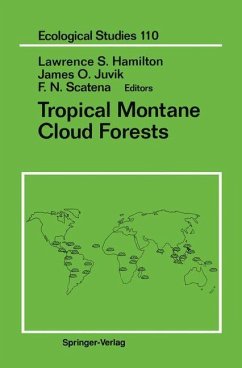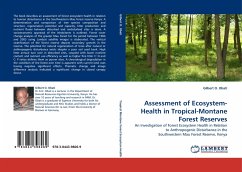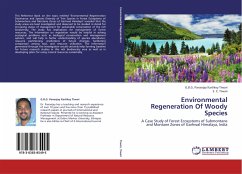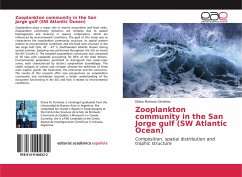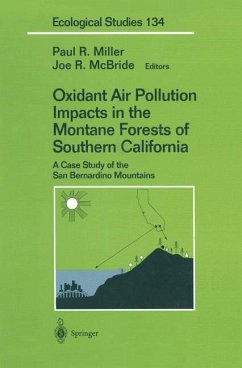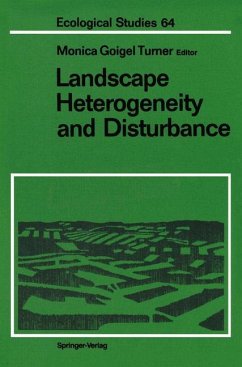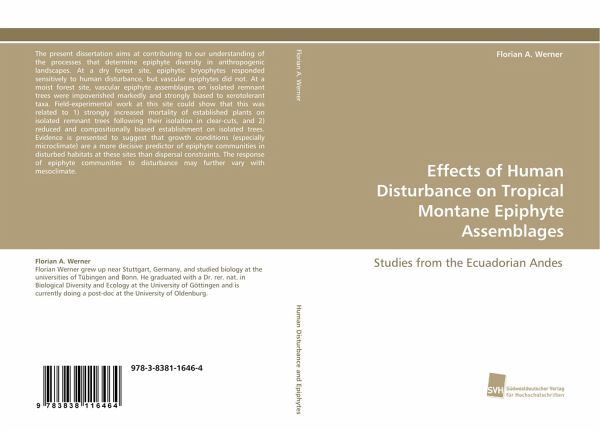
Effects of Human Disturbance on Tropical Montane Epiphyte Assemblages
Studies from the Ecuadorian Andes
Versandkostenfrei!
Versandfertig in 6-10 Tagen
53,99 €
inkl. MwSt.

PAYBACK Punkte
27 °P sammeln!
The present dissertation aims at contributing to our understanding of the processes that determine epiphyte diversity in anthropogenic landscapes. At a dry forest site, epiphytic bryophytes responded sensitively to human disturbance, but vascular epiphytes did not. At a moist forest site, vascular epiphyte assemblages on isolated remnant trees were impoverished markedly and strongly biased to xerotolerant taxa. Field-experimental work at this site could show that this was related to 1) strongly increased mortality of established plants on isolated remnant trees following their isolation in cle...
The present dissertation aims at contributing to our understanding of the processes that determine epiphyte diversity in anthropogenic landscapes. At a dry forest site, epiphytic bryophytes responded sensitively to human disturbance, but vascular epiphytes did not. At a moist forest site, vascular epiphyte assemblages on isolated remnant trees were impoverished markedly and strongly biased to xerotolerant taxa. Field-experimental work at this site could show that this was related to 1) strongly increased mortality of established plants on isolated remnant trees following their isolation in clear-cuts, and 2) reduced and compositionally biased establishment on isolated trees. Evidence is presented to suggest that growth conditions (especially microclimate) are a more decisive predictor of epiphyte communities in disturbed habitats at these sites than dispersal constraints. The response of epiphyte communities to disturbance may further vary with mesoclimate.



